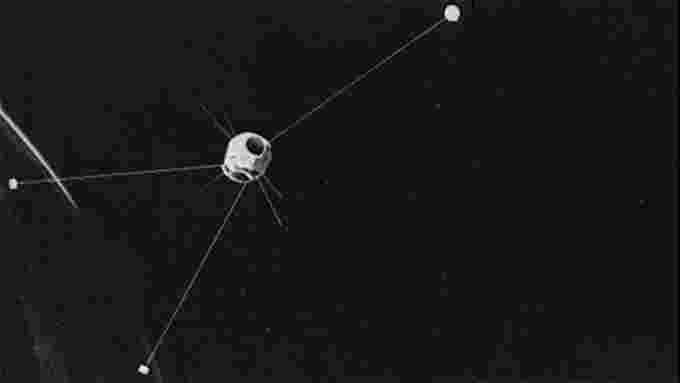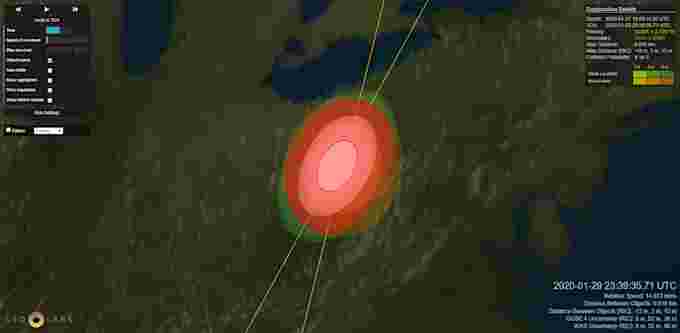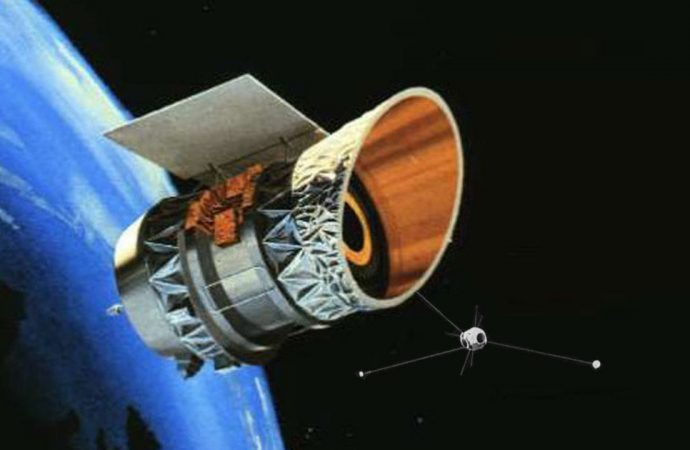Thursday, January 30th 2020, 9:45 am – This near-miss highlights the worries about Kessler Syndrome and the future safety of spacecraft and space travel
Source: The Weather Network
Just before 7 p.m. Eastern Time, on the night of Wednesday, January 29, 2020, an old NASA telescope and a defunct military satellite passed by each other so close, they nearly collided.
LEOLabs, a California-based company that monitors space junk and satellites using ground-based radar, flagged this potential accident on Monday, posting an alert to Twitter.
IRAS was NASA’s Infrared Astronomical Satellite, launched in 1983 as the first mission to map out the stars in infrared light from above the atmosphere. The telescope operated for just ten months before it was decommissioned, and after briefly being reactivated in 1985, it has been circling the Earth as junk for nearly 35 years.
GGSE-4, the Gravity Gradient Stabilization Experiment, was a science payload attached to the POPPY 5B U.S. military surveillance satellite. Launched in 1967 and deactivated in 1972, it has been part of the cloud of space junk around our planet for nearly 48 years.

According to Jonathan McDowell, an astronomer at the Harvard-Smithsonian Center for Astrophysics, IRAS has a mass of nearly one metric ton, while POPPY 5B is roughly 85 kg. While IRAS seriously outweighs POPPY 5B & GGSE-4, since the two are travelling at 14.7 kilometres per second (nearly 53,000 km/h) relative to one another, even a glancing blow between the two would tear both objects apart.

LEOLabs initially predicted that the two satellites were to pass within 15-30 metres of one another on Wednesday night. Normally, that would still count as a clean miss, however their calculations still gave a 1 in 100 chance of an impact, simply based on the small uncertainties in the location and track of each satellite.
As McDowell pointed out on Twitter, however, POPPY 5B/GGSE-4 has 18-metre-long gravity gradient booms – long antenna-like structures that extend far out from the satellite’s centre of mass. If the two were to pass within 15-18 metres of each other, there’d be a good chance of a high-speed impact with one of those booms.

As of Tuesday night, LEOLabs updated their prediction, which now shows that the two satellites’ closest pass will likely bring them to within 13-87 meters of one another. Although the update includes the potential for the satellites to be even closer than in Monday night’s prediction, the farthest pass is nearly three times the original distance. Thus the chance of impact went down from 1 in 100 to 1 in 1,000.
Further observations and modelling, however, along with updating the size of the POPPY 5B/GGSE-4 satellite to account for the 18 metre booms, forced LEOLabs to update that assessment early Wednesday morning, giving the impact a worrisome 1 in 20 chance.
Fortunately, when the time came, the encounter between these two satellites turned out to be uneventful. Although the pass was quite close – likely within 50 meters of one another – no impact was observed.
Photographer Julian Diamond snapped a long exposure image of the encounter, capturing the tracks of the satellites as the passed one another. Twitter user @tehnakki, a spacecraft engineer in Oakland, CA, took Diamond’s image and produced an annotated animation to highlight what he captured.
If there was an impact, the faint track for GGSE-4 would have either disappeared or changed direction, and there may have even been evidence of debris along its path. Similarly, although IRAS’s track following the potential impact point is shorter in the image, it is likely that it would have also shown signs of debris.
So, this was a clean miss!
KESSLER SYNDROME
If these two dead satellites had collided, it would have resulted in a cloud of shrapnel and debris, which would have continued to orbit the planet.
There was only a remote chance of the satellites crashing to Earth following such an impact. At an altitude of 900 km above Earth’s surface, they are too far up to be dragged down by friction with Earth’s atmosphere. The worry was that some of the debris may have ended up in orbits that would put other spacecraft – functional satellites and even the International Space Station – at risk of further impacts.
One thing that might protect other satellites is distance. If the had two suffered an impact, their debris would have likely stayed at an altitude of 900 km or thereabouts. The ISS, on the other hand, orbits at an altitude of around 400 km. Many polar orbiting satellites orbit between 300 and 400 km up. GPS satellites are typically located some 20,000 kilometres out, and telecommunication and weather satellites are even farther, at around 36,000 km away.
These distances would likely have provided enough of a buffer to prevent further impacts, but it would have depended on how much ‘scatter’ there was to the impact debris.
Although the 2013 movie Gravity presents a sensationalized, extreme version of what is known as the Kessler Syndrome, it is an excellent example of the cascade effect an impact in orbit can have. One impact produces a spreading cloud of debris. The pieces in that cloud impact one or more other satellites, producing even more debris, and this continues. While the film showed this happening over just a matter of hours, with multiple satellites and space stations raining down to burn up in the atmosphere, in reality, the Kessler Syndrome is a long-term worry.
An impact between two satellites today might result in another satellite or spacecraft being hit by the debris months or a few years from now. The debris from that impact would spread out, and there might be another impact in just weeks or months afterward, perhaps followed by another just days or weeks later. This is the worry associated with Kessler Syndrome – that impacts in orbit make future impacts more likely and more frequent, resulting in a cascade effect that eventually puts every piece of technology in low-Earth orbit at risk.
This near-impact highlights the need for space agencies and corporations to do everything they can to reduce the amount of space junk in orbit of our planet – both by removing the junk that is already there, and reducing the amount of junk that is added during future launches.
Source: The Weather Network

































Leave a Comment
You must be logged in to post a comment.